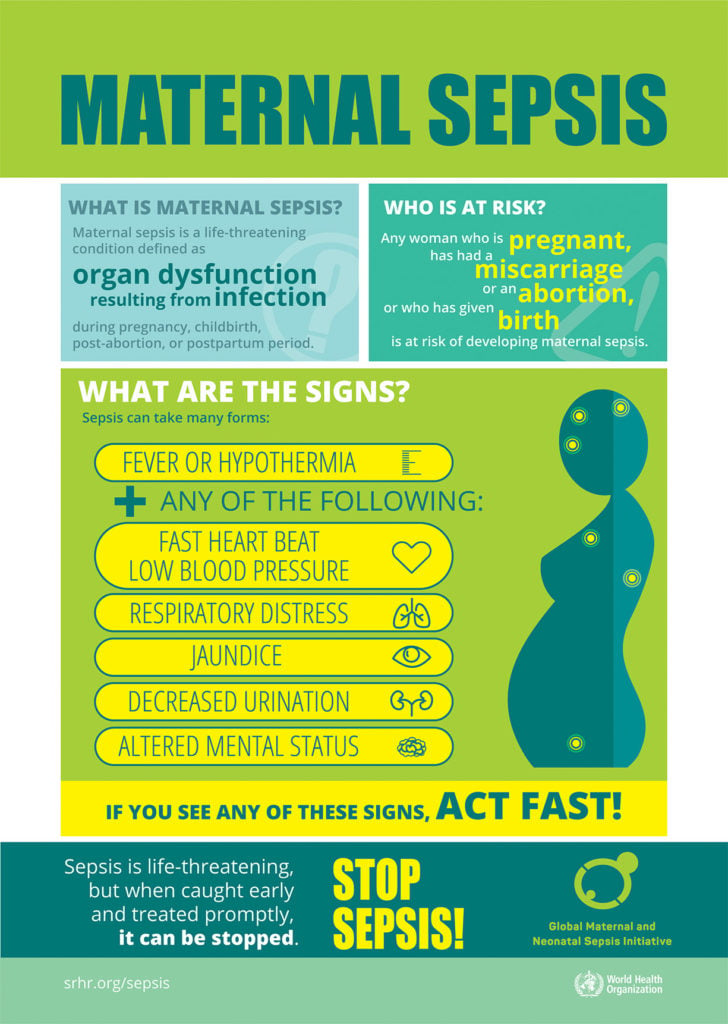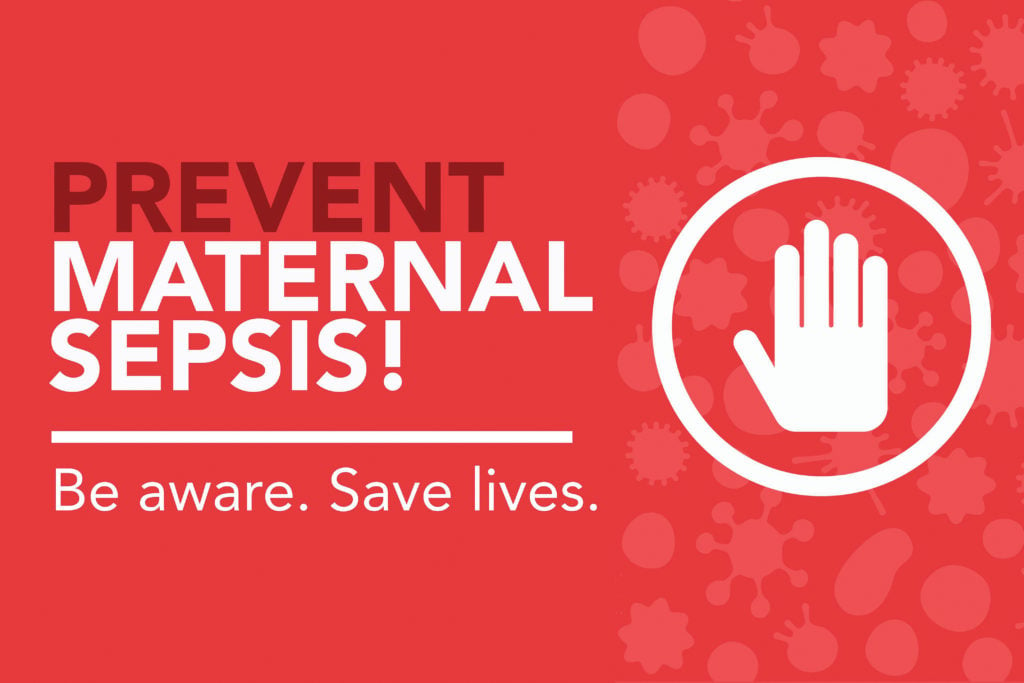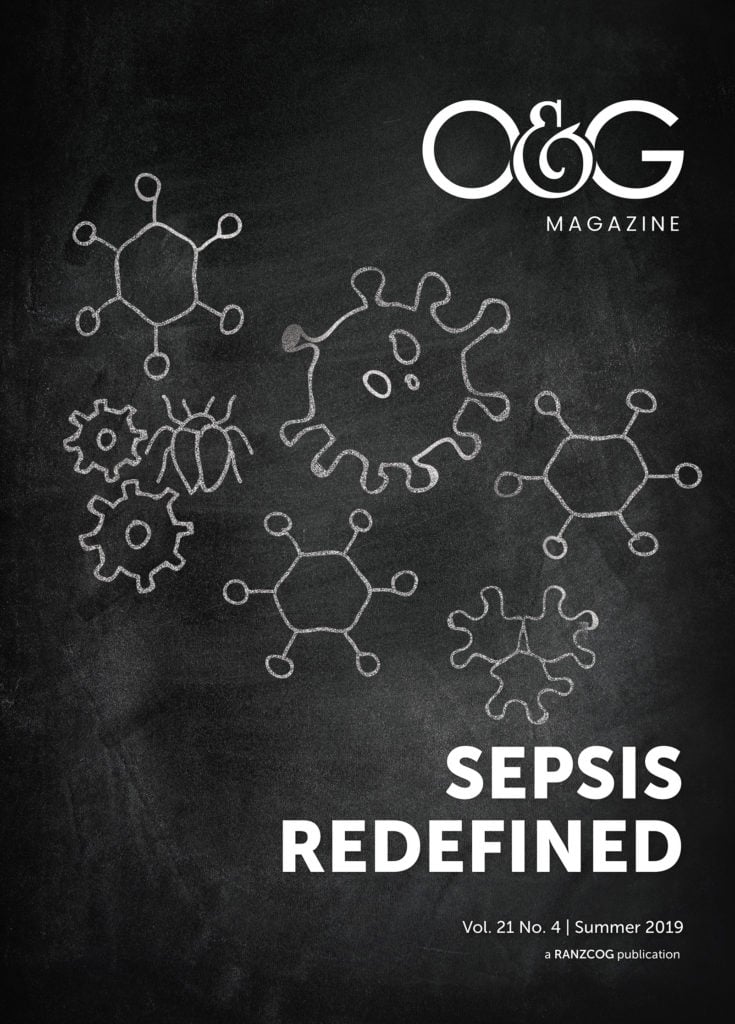Infections and sepsis affect thousands of pregnant and recently pregnant women every year, resulting in many avoidable deaths and near misses with debilitating consequences.1 2 Maternal sepsis is a ‘life-threatening condition defined as organ dysfunction resulting from infection during pregnancy, childbirth, post-abortion or postpartum period’.3 Accurate data on the true burden of maternal infections and sepsis, which are critical information in attempting to curb mortality and morbidity resulting from sepsis, were unknown.
To respond to this knowledge gap, the World Health Organization embarked on an ambitious challenge of implementing the Global Maternal Sepsis Study (GLOSS) and Awareness Campaign in 2017 in 52 countries around the world in a unique, one-week simultaneous enrolment of pregnant and recently pregnant women hospitalised in 713 participating facilities.4The objectives of GLOSS were to assess the burden of maternal infections and sepsis, to validate existing screening and diagnostic criteria and to raise awareness on maternal sepsis among healthcare providers.5 More than 2800 women with suspected or confirmed infections were identified during the week of 28 November to 4 December 2017. Four countries from the WHO Western Pacific region participated in the study: Cambodia, Mongolia, Philippines and Vietnam, contributing with a total of 122 women from 57 facilities.
Raising awareness on sepsis is also at the forefront of the Global Maternal and Neonatal Sepsis Initiative as well as the 2017 World Health Assembly resolution on sepsis.6 7 GLOSS addressed this quest by developing a campaign to accompany the study to increase healthcare provider awareness on maternal sepsis identification and management. The campaign was intended to be implemented in all participating facilities prior to data collection and to continue throughout study implementation and beyond. Through posters, infographics, fact sheets, a website (srhr.org/sepsis/), social media messaging, press releases and an online congress, healthcare providers were sensitised and made more aware of the topic, thus helping identify women with signs and symptoms of infections during the study8 (Figure 1). While materials developed for the campaign were standardised and translated into several languages, countries were given ownership over its implementation. This resulted in some countries developing different materials to accompany the campaign, such as videos, pamphlets, t-shirts, bookmarks and other giveaways, while some countries expanded the campaign to other locations not participating in the study.9For example, Mexico implemented the campaign country-wide, even though the study only addressed Mexico City. The country coordinator explained that this was in response to the pressing need to increase healthcare provider awareness of sepsis since they had identified many women suffering the consequences of infections during, and immediately following, a pregnancy.10
Similarly, our colleagues in Philippines, struck by the dire consequences from infections among women during pregnancy, delivery and postpartum/post-abortion, decided to expand on the work from the GLOSS awareness campaign and initiate country-specific actions to address these. This led to the development of a national awareness campaign that ran in October 2019.
Maternal sepsis burden and awareness campaign in the Philippines
The Philippine participation in GLOSS highlighted glaring issues about its hospital system and the quality of care provided to women: 45 per cent of patients who participated in the study had an infection, yet the primary source was not identified; 48 per cent were diagnosed based on clinical examination and only 15 per cent were diagnosed aided by laboratory tests. And while 55 per cent of the cases had infection on the day of admission, 45 per cent developed infection while already in the hospital. A common practice to avoid infection is the provision of prophylactic antibiotics to almost all maternity admissions.
In addition, maternal death reviews of 108 cases conducted in 2016 noted maternal sepsis accounted for 9 per cent of the deaths. A finding of the review is that maternal sepsis could have been prevented, as risk factors and the means to reduce the risk of sepsis are known and simple: access to clean water and sanitation, access to quality care during pregnancy and birth, early recognition of the signs of infection, timely access to the right antibiotics and proper infection prevention and control in birthing centres and hospitals.
An analysis of the information gathered during visits to the participating hospitals in Manila under GLOSS made us realise, at the Safe Motherhood Program, that indeed our vague understanding of maternal sepsis has led us to think that it is a condition that can easily be clinically detected and addressed with antibiotics. It is the ‘avoidability’ and less costly approach of managing maternal sepsis and the promise of saving at least 161 mothers from dying that inspired the National Safe Motherhood Program to launch a Maternal Sepsis Awareness Campaign with a message to avoid infection during pregnancy and save lives. This campaign is a Department of Health initiative in collaboration with the Philippine Infectious Disease Society for Obstetrics and Gynaecology and the Philippine Hospital Infection Control Society and was inspired by the country’s participation in the GLOSS study and analysis of country findings. It is hoped that through the campaign the number of mothers’ lives saved can lead the country to a 3–9% annual rate of decline in maternal mortality ratio towards achieving the SDG goal of 70/100 000 live births, or better, by 2030.

Figure 1. Infographic developed for the GLOSS awareness campaign.
Philippines campaign features
The campaign is highlighted by Regional Caravans and prioritises the five regions with reported maternal sepsis deaths. At the primary care level, advocacy campaigns targeting doctors, nurses and midwives in both the public and private sectors will be intensified through displaying posters in hospitals and primary-level birthing centres (Figure 2). With messages like ‘Maternal sepsis can lead to death’ and ‘Practice infection prevention and control at all times in your facility; be a model of cleanliness!’ the campaign looks to raise awareness among pregnant women and healthcare workers, including midwives. Likewise, community health education through local government health-system-initiated Buntis (Pregnant) Congress and mothers’ classes on safer pregnancy and childbirth, and ways to prevent infection during pregnancy, shall be conducted.
It should be noted that most of the country’s doctors at primary level are non-specialists and while they are trained on basic emergency obstetric and newborn care, quality of care is not optimised. On the other hand, private-practising midwives abound in the cities and reports of midwives practising beyond the limits of their profession are common, compromising maternal health and survival. The main feature of the Caravan is the conduct of regional scientific forums that will serve as venue for updates on the clinical features and management of maternal sepsis and public health measures to prevent them. The scientific forums will discuss topics related to maternal sepsis across the various issues that confront primary care maternity and newborn care providers and their referral centres, including interventions to improve survival from maternal sepsis, infection control recommendations during labour and delivery, and early recognition of common maternal infections. Around 800 doctors, nurses and midwives have benefited from the campaign. By 2021, the campaign will have covered the whole country.
Participation in GLOSS has brought about changes both in awareness as well as in how maternal infections are identified and managed at the facility level across the world. Maternal sepsis is life-threatening, but when caught early and treated promptly, it can be stopped.

Figure 2. Poster developed for the campaign in the Philippines.
References
- Say L, Chou D, Gemmill A, et al. Global causes of maternal death: a WHO systematic analysis. Lancet Glob Health. 2014;2(6):e323–e33.
- Alkema L, Chou D, Hogan D, et al. Global, regional, and national levels and trends in maternal mortality between 1990 and 2015, with scenario-based projections to 2030: a systematic analysis by the UN Maternal Mortality Estimation Inter-Agency Group. The Lancet. 2016;387(10017):462–74.
- World Health Organization. Statement on maternal sepsis. 2017. Available from: http://apps.who.int/iris/handle/10665/254608.
- The Global Maternal and Neonatal Sepsis Initiative: WHO. Global Maternal & Neonatal Sepsis Initiative. Available from: https://srhr.org/sepsis/.
- Bonet M, Souza JP, Abalos E, et al. The global maternal sepsis study and awareness campaign (GLOSS): study protocol. Reprod Health. 2018;15(1):16.
- The Global Maternal and Neonatal Sepsis Initiative: a call for collaboration and action by 2030. Lancet Glob Health. 2017. Available from: https://doi.org/10.1016/S2214-109X(17)30020-7.
- WHO. Improving the prevention, diagnosis and management of sepsis. World Health Assembly; 2017. Available from: http://apps.who.int/gb/ebwha/pdf_files/WHA70/A70_R7-en.pdf?ua=1.
- The Global Maternal and Neonatal Sepsis Initiative: WHO. Global Maternal & Neonatal Sepsis Initiative. Available from: https://srhr.org/sepsis/.
- Assessing and Addressing Maternal Sepsis. MSD for Mothers. Available from: www.msdformothers.com/blog/assessing-addressing-maternal-sepsis.html.
- WHO. Raising awareness of maternal sepsis in Mexico. 2018. Available from: www.who.int/reproductivehealth/maternal-sepsis-mexico/en/.





Leave a Reply